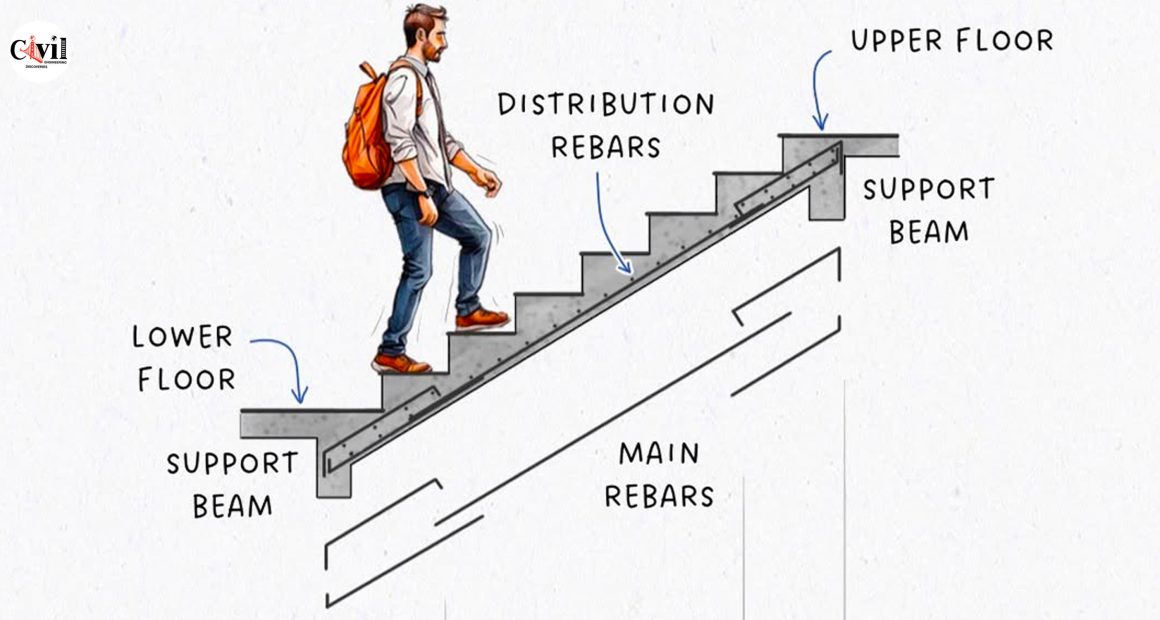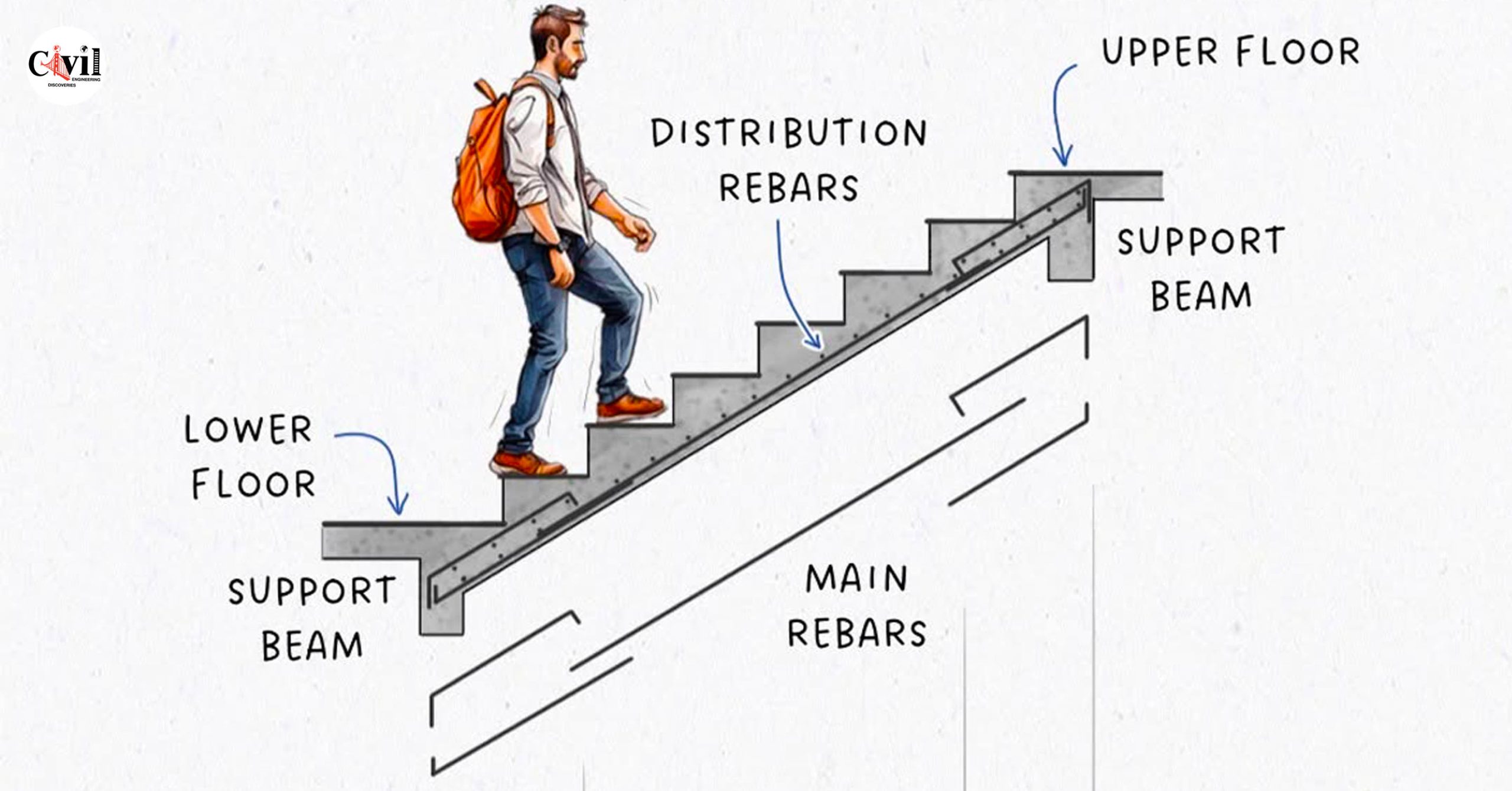Stairs are essential to any multi-level building, combining functionality with architectural style. Among the various types of stair designs, stairs on beams are widely used for their structural stability and durability. This guide highlights the typical details of such stairs and their construction.
What Are Stairs on Beams?
Stairs on beams are a structural design where beams directly support the stairs, providing enhanced strength. This design is commonly used in residential, commercial, and industrial buildings due to its reliability and ease of construction.
Key Components of Stairs on Beams
Understanding the components of stairs on beams is vital for designing and constructing them effectively. Below are the primary elements:
1. Support Beams
The support beams act as the foundation for the entire staircase structure. They run horizontally on both the upper and lower floors, providing stability and distributing the load evenly.
- Lower Beam: Positioned at the base of the staircase, this beam anchors the stairs to the lower floor.
- Upper Beam: This beam connects the stairs to the upper floor and ensures seamless integration with the upper structure.
2. Main Reinforcement Bars (Main Rebars)
Main rebars are placed longitudinally along the length of the stairs. These reinforcements bear the weight of the structure and transfer it to the supporting beams. Proper placement and spacing of these bars are crucial to prevent cracking and ensure safety.
3. Distribution Reinforcement Bars
Distribution rebars are placed perpendicular to the main rebars. They evenly distribute the load and maintain the integrity of the staircase. Together with the main rebars, they form a reinforced framework that can handle heavy loads efficiently.
Design Proportions and Spacing
For a well-balanced design, the total length of the staircase (denoted as L) is divided into specific sections. According to typical design standards:
- L/5 Sections: Both the lower and upper segments of the staircase span one-fifth of the total length. This proportion ensures uniform load distribution across the structure.
The strategic placement of reinforcements within this framework maximizes strength while minimizing material wastage.
Advantages of Stairs on Beams
1. Structural Stability
Stairs on beams are inherently stable due to their reinforced design. The combination of support beams and rebars ensures the stairs can handle significant weight without compromising safety.
2. Versatility
This design suits various architectural styles and layouts. Whether in residential homes or commercial buildings, stairs on beams can be customized to fit different spaces.
3. Durability
With proper construction and maintenance, stairs on beams can last for decades. The use of reinforced concrete adds resistance to wear, weather, and heavy usage.
Construction Tips for Stairs on Beams
1. Accurate Measurements
Ensure all dimensions are calculated accurately, including the rise, run, and length of the staircase. Precision during the design phase reduces errors during construction.
2. Proper Reinforcement
Use high-quality rebars and follow standard spacing guidelines. Ensure both main and distribution bars are securely tied to prevent movement during concrete pouring.
3. Beam Placement
Position the support beams carefully to provide maximum stability. They should align perfectly with the staircase’s dimensions and load requirements.
4. Quality Materials
Opt for high-grade concrete and steel to enhance the staircase’s strength and durability. This investment pays off in the long run by reducing repair and maintenance costs.
Applications of Stairs on Beams
This design is ideal for:
- Residential Buildings: Offering a blend of elegance and strength, stairs on beams are a popular choice for modern homes.
- Commercial Spaces: Their robust design makes them suitable for offices, malls, and public buildings with high foot traffic.
- Industrial Facilities: These stairs can withstand heavy loads and harsh conditions, making them a practical solution for factories and warehouses.
Click Here To See Essential Knowledge For Civil Site Engineers
Photo Credit: Matheus Borges












cool